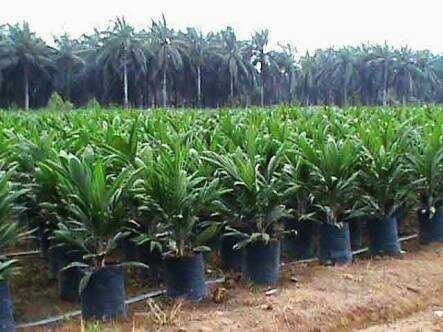how to make a palm oil worship
How to make superior-quality palm-oil sprouts? Check out the guide below!

Step 1: Basic Dura Taking Process
Broadly speaking, palm fruit bunches of dura type are larger and heavier than tenera in the same age. To be sure try to split the fruit, if the shell is thick enough means it's palm oil dura. You simply take a bunch of fruit just because it is able to produce sprouts-palm oil sprouts are around 2.000-2.500 berondolan palm. Remember, palm fruit bunches that can be used are bunches that are ripe and not too ripe. Pick up the fruit bunches as you are harvesting palm oil normally.
Step 2: Berilolan Threshing Process
The secret to the fruit bunches of palm oil easily droved by first dipamnya. The way is chopped fruit bunches of palm fruit into a few spikelet fruit stalks. After that, put all these oil palm stalks into sacks, plastic, cloth, or tarpaulins to keep warm temperatures inside. The replanting was done for three days. The next fruit of palm fruit will be more easily dipondolkan from the stalk.
Step 3: The Fermentation Process Berilolan
There are two methods that can be used to ferment the berondolan of oil palm, namely wet fermentation and dry fermentation. Wet fermentation is done by soaking the palm berondolan for 7-10 days in which every day the water of the bath should be replaced. Usually there will be a bad smell and yellowish oil in the water of the bath. While the dry fermentation process is done by wrapping the palm berondolan into the sack for 7 days until it appears mold that grows between the berondolan.
Step 4: The Processing Process Berondolan
Before being made into sprouts, the fruit of oil palm should be peeled from the fibers used to be pounded slowly. If you do not have pestle and mortar, try using impromptu equipment such as buckets and pesticide tanks that have been washed clean. The next step, wash the seeds of these palms under running water to remove the mesokarp layer. Usually the collision berondolan palm is done up to three times so that the seeds are completely clean from the flesh and mesokarp. If the seeds of palm oil are still covered in fruit flesh, the risk is susceptible to seeds covered with mushrooms.
Step 5: Seed Dropout Process
The next process is to dry the seeds of oil palm until dry properly. Usually this process will take up to 1-3 days depending on the weather. The seeds of oil palm that have completely dried up then the color will turn into a grayish brown. These dried seeds are then stored in plastic bags or buckets and placed in a dark and warm place.
Step 6: Re-Seeding Process
These clean and dry seeds are then soaked once again to do good quality seed selection and not. High quality palm kernels marked from seeds remain submerged during the immersion process. While the seeds are floating in the water means the condition is hollow so not worth planting. The re-immersion stage can be done for 7 days.
Step 7: Seed Storage Process
On the eighth day of immersion, you can lift the seeds of oil palm from the water. Before storage, these seeds need to be aerated for a full day so the surface is not moist. The seeds of oil palm are then put into plastic containers or buckets then placed in an ideal place to add oil palm. Keep in mind, a good place for seed germination is a place that can not get sunlight and has an average temperature that tends to warm. For storage of seeds in plastic bags, you should need to open the bag periodically so that conditions in it is not so humid.
Step 8: The Sprout Selection Process
The seeds of oil palm that was stored earlier will be issued sprouts at the age of 7-10 days since the process of seed storage. Seeds that already have shoots should be taken immediately for breeding. The germination takes place every 7 days until the tenth. Seeds that do not want to germinate after 10 weeks later mean poor quality, so it needs to be destroyed.